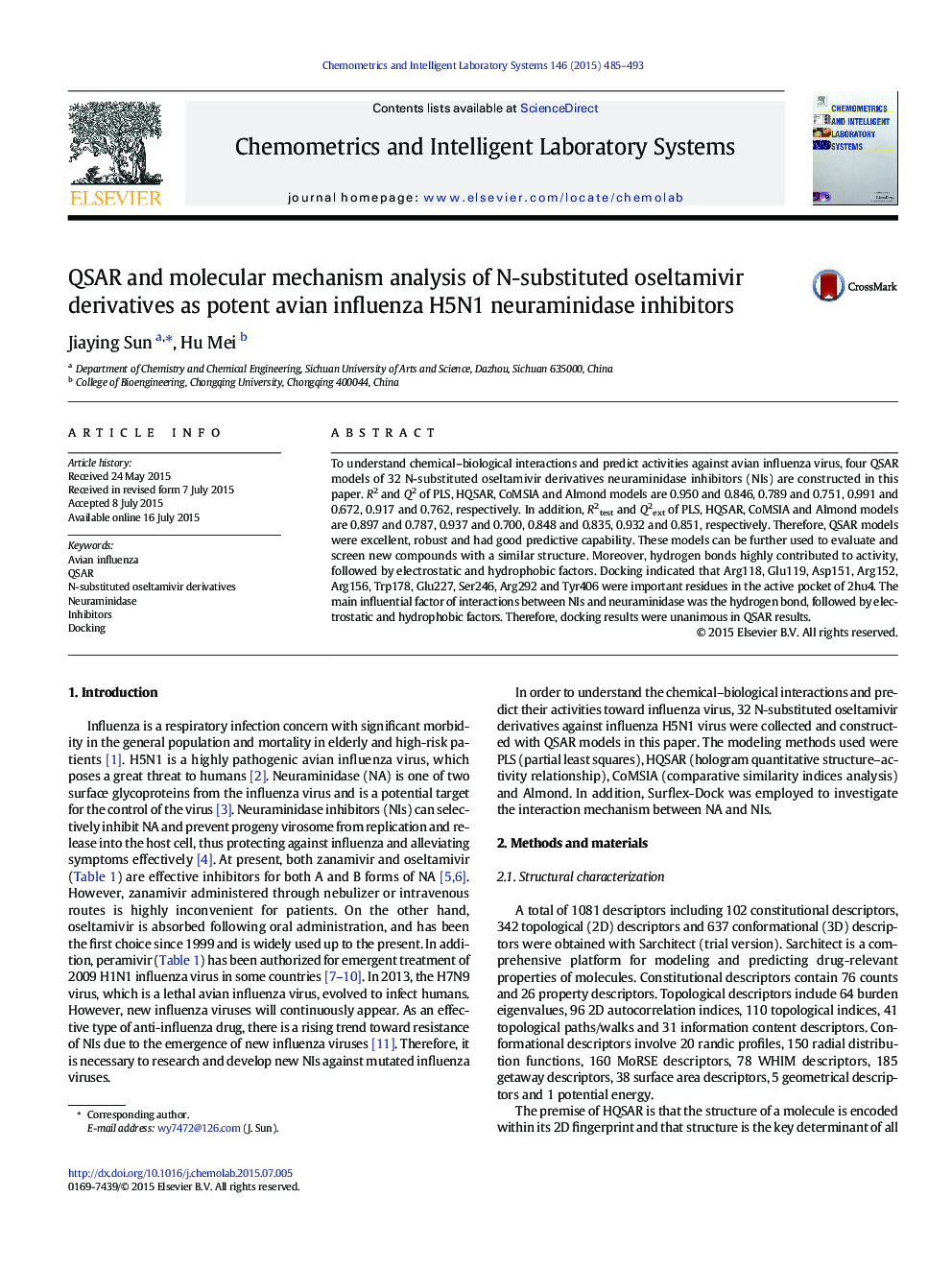| Article ID | Journal | Published Year | Pages | File Type |
|---|---|---|---|---|
| 7563286 | Chemometrics and Intelligent Laboratory Systems | 2015 | 9 Pages |
Abstract
To understand chemical-biological interactions and predict activities against avian influenza virus, four QSAR models of 32Â N-substituted oseltamivir derivatives neuraminidase inhibitors (NIs) are constructed in this paper. R2 and Q2 of PLS, HQSAR, CoMSIA and Almond models are 0.950 and 0.846, 0.789 and 0.751, 0.991 and 0.672, 0.917 and 0.762, respectively. In addition, R2test and Q2ext of PLS, HQSAR, CoMSIA and Almond models are 0.897 and 0.787, 0.937 and 0.700, 0.848 and 0.835, 0.932 and 0.851, respectively. Therefore, QSAR models were excellent, robust and had good predictive capability. These models can be further used to evaluate and screen new compounds with a similar structure. Moreover, hydrogen bonds highly contributed to activity, followed by electrostatic and hydrophobic factors. Docking indicated that Arg118, Glu119, Asp151, Arg152, Arg156, Trp178, Glu227, Ser246, Arg292 and Tyr406 were important residues in the active pocket of 2hu4. The main influential factor of interactions between NIs and neuraminidase was the hydrogen bond, followed by electrostatic and hydrophobic factors. Therefore, docking results were unanimous in QSAR results.
Related Topics
Physical Sciences and Engineering
Chemistry
Analytical Chemistry
Authors
Jiaying Sun, Hu Mei,
